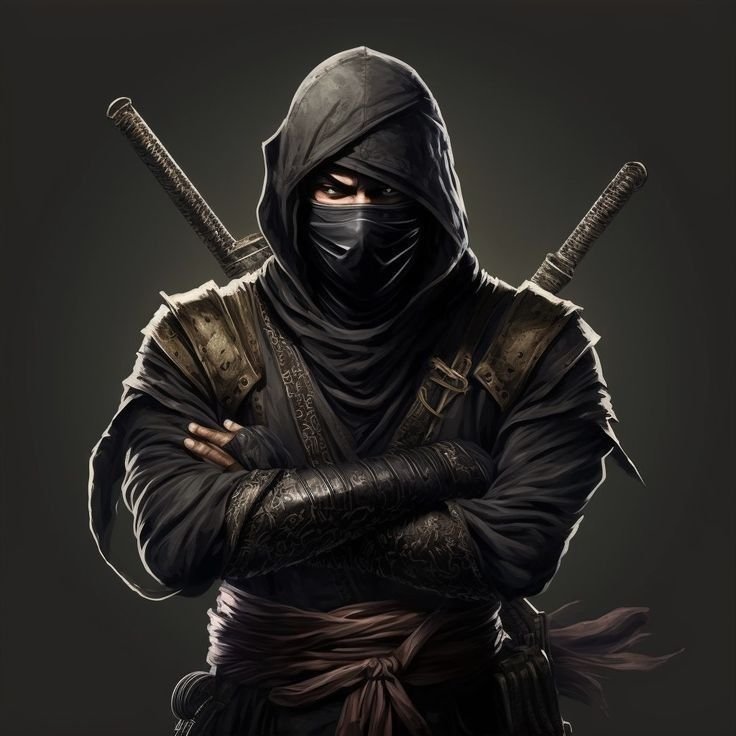When you hear the word ninja, you might picture shadowy figures clad in black, sneaking through the night with unparalleled agility. But beyond the myths and Hollywood portrayals, the world of ninjas is rich in history, culture, and mystery. Ninjas have captivated people’s imaginations for centuries, representing not just warriors of stealth, but also symbols of discipline, adaptability, and intelligence. In this article, we’ll explore what it truly meant to be a ninja and how their skills and influence have persisted through time.
Who Were the Ninjas?
The [ninja] originated in feudal Japan, primarily during the Sengoku period (1467-1603). They were skilled spies, assassins, and guerrilla warriors. Unlike the more honorable samurai, who followed a strict code of conduct known as Bushido, ninjas did whatever was necessary to accomplish their missions. They were masters of espionage, sabotage, and deception, making them a vital part of warfare during Japan’s warring states era.
Ninjas, also known as shinobi, were often recruited from the lower classes of society. Many came from rural areas and were trained from a young age in the arts of stealth and survival. These individuals had to be resourceful, as they lacked the wealth and armor of their samurai counterparts. Nonetheless, their contribution to history was invaluable.
Ninja Training: More Than Just Stealth
To become a [ninja], extensive training was required, not just in martial arts but in a wide range of skills. Their abilities went far beyond swordplay and combat. Ninjas needed to be masters of disguise, able to blend into any environment, whether it was in the bustling cities or the dense forests. Their survival skills were top-notch, as they were often on long missions behind enemy lines.
Some key areas of ninja training included:
- Ninjutsu: The martial art most associated with [ninjas], focusing on unarmed combat, weapons training, and stealth techniques.
- Kenjutsu: The art of sword fighting, a crucial skill for combat situations.
- Taijutsu: Hand-to-hand combat skills that emphasized using an opponent’s strength against them.
- Disguise and infiltration: Learning to adopt different personas to move through enemy territory unnoticed.
- Poisons and explosives: Ninjas were also adept at creating and using poisons and rudimentary explosives to sabotage enemies or protect themselves.
They practiced in secrecy, developing tactics that allowed them to use their environment to their advantage. A ninja could make use of almost anything as a weapon, from simple farming tools to elaborate traps.
The Role of Ninjas in Feudal Japan
Ninjas played a crucial role in shaping the outcomes of many battles in feudal Japan. Often hired by daimyo (feudal lords), ninjas were used to gather intelligence, perform covert operations, or even assassinate rival leaders. They were particularly skilled in hit-and-run tactics, which allowed them to strike quickly and vanish before the enemy could react.
In many ways, ninjas were the predecessors of modern special forces. Their missions were often dangerous and required high levels of secrecy. Unlike the heavily armored samurai, who fought in the open, [ninjas] relied on cunning and the element of surprise.
Ninja Clans: A Close-Knit Community
The ninjas weren’t just individuals working alone; they often belonged to large, organized clans. These clans operated in secrecy, passing down their knowledge from one generation to the next. Some of the most famous ninja clans included the Iga and Koga clans, which were known for their elite warriors and unrivaled espionage skills.
The clan structure allowed [ninjas] to operate effectively across different regions. By working together, they could carry out large-scale operations and exchange valuable information about enemy movements or vulnerabilities. Clans would train their members in all aspects of ninjutsu and often formed alliances with local lords who required their services.
Ninja Weapons and Tools
Though ninjas are often depicted with swords, their arsenal was much broader. In fact, they used a variety of weapons, many of which were designed to be easily concealed or to serve multiple purposes. Here’s a glimpse at some of the most famous [ninja] tools:
- Katana: A traditional Japanese sword, often shorter for ninjas to allow for quick movements.
- Shuriken: Known as throwing stars, these were often used as distractions rather than for killing.
- Kunai: A versatile tool used for climbing, digging, or as a weapon.
- Smoke bombs: Used to create confusion and aid in quick escapes.
- Blowguns: Sometimes used for stealth attacks, often with poisoned darts.
These tools were an extension of the ninja’s skill set. They relied on them to be efficient, quick, and to remain undetected while carrying out their missions.
The Myths vs. The Reality of Ninjas
When we think of [ninjas] today, many of us imagine characters capable of supernatural feats, like vanishing into thin air or walking on water. While these portrayals are fun, the reality was a bit more grounded. Ninjas relied heavily on practical skills, psychology, and physical training rather than magical abilities.
The idea of ninjas having “supernatural” abilities often stemmed from their incredible agility, mastery of disguise, and use of clever tricks to create illusions. For instance, a [ninja] might use smoke bombs or carefully planned distractions to make it seem like they disappeared. In truth, they were using the environment to outsmart their enemies.
Although the idea of a [ninja] walking on water seems far-fetched, they did use tools like mizugumo, which were wooden shoes that allowed them to navigate swampy terrain more easily.
Ninjas in Modern Popular Culture
The figure of the [ninja] has continued to captivate audiences, not just in Japan but around the world. From video games to blockbuster movies, ninjas are a popular subject in modern culture. The image of the stealthy, black-clad warrior is iconic, though it often exaggerates the reality of historical ninjas.
Some notable representations of [ninjas] in modern culture include:
- Movies: Films like “Teenage Mutant Ninja Turtles” and “Ninja Assassin” have brought the idea of ninjas into mainstream entertainment.
- Video Games: Characters like Ryu Hayabusa from Ninja Gaiden or Scorpion from Mortal Kombat are inspired by ninja mythology.
- Comics and Anime: Shows like Naruto have taken the concept of ninjas and blended it with fantasy elements, creating new generations of fans.
These modern depictions, while far from historically accurate, keep the ninja spirit alive, highlighting their adaptability, intelligence, and determination.
The Legacy of Ninjas Today
The lessons we can take from [ninjas] go far beyond their role in warfare. In many ways, the principles of ninjutsu — adaptability, stealth, and resourcefulness — are as relevant today as they were centuries ago. Whether in business, sports, or personal development, the traits that made ninjas successful can inspire us to be more strategic and resilient in our own lives.
Even today, there are schools dedicated to preserving the art of ninjutsu. These schools teach traditional techniques while also adapting them for modern self-defense. While we may no longer need ninjas for espionage, their skills in observation, patience, and strategic thinking remain valuable.
Table: Key Ninja Traits and Skills
| Skill | Description |
|---|---|
| Stealth | Moving unnoticed and undetected through any environment |
| Disguise | Blending into surroundings or adopting new personas |
| Martial Arts | Combat skills including taijutsu, kenjutsu, and weaponry |
| Survival | Adapting to difficult conditions, often in enemy territory |
| Strategy | Using intelligence, deception, and planning to outmaneuver enemies |
Conclusion
The [ninja] is more than just a figure of myth or fiction. Their history is a testament to the power of adaptability, cunning, and resilience. From their humble beginnings in feudal Japan to their larger-than-life portrayals in today’s media, ninjas have left a lasting mark on the world. While many of their techniques are no longer necessary in modern warfare, the lessons they impart about patience, strategy, and using one’s environment to advantage remain as relevant as ever.
Next time you think of a [ninja], remember that their true power lay not in mystical abilities, but in their incredible mastery of the human mind and body. And in a world where quick thinking and adaptability are crucial, perhaps we all have a bit of ninja within us.





